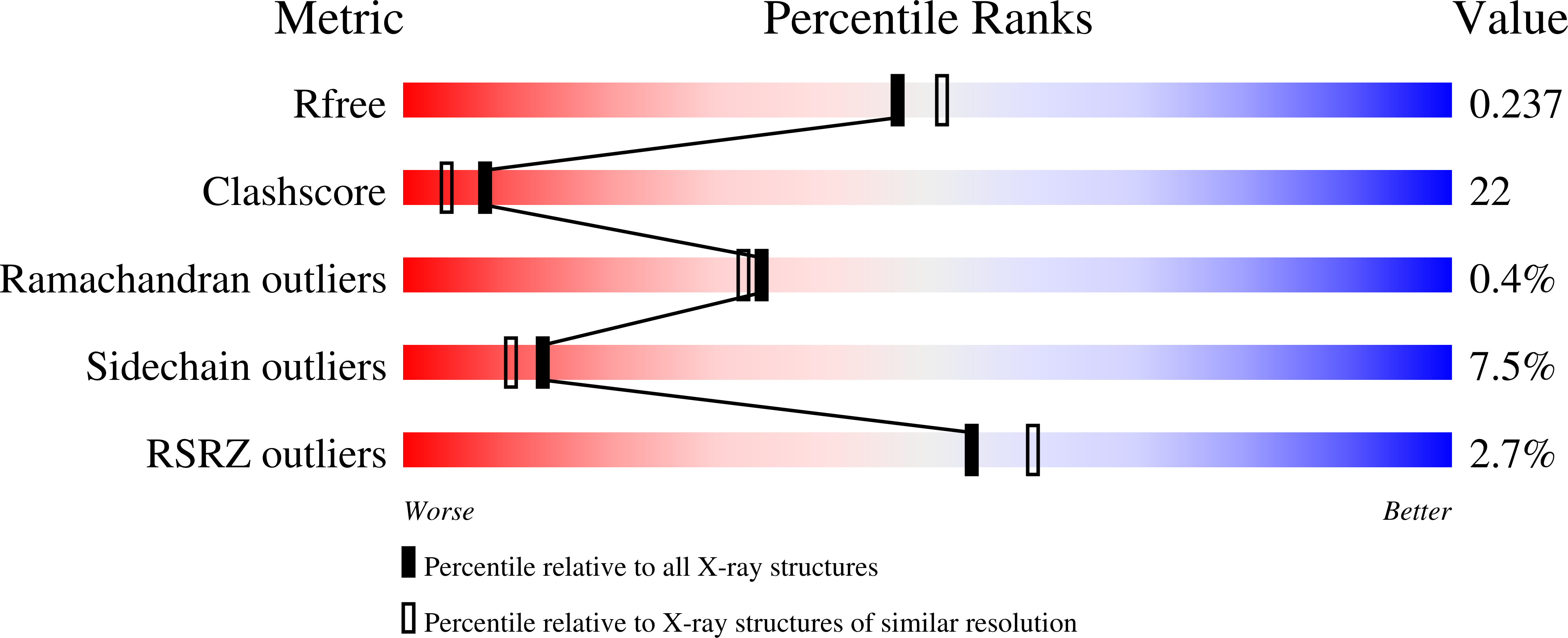Crystal structure and function of a DARPin neutralizing inhibitor of lactococcal phage TP901-1: comparison of DARPin and camelid VHH binding mode.
Veesler, D., Dreier, B., Blangy, S., Lichiere, J., Tremblay, D., Moineau, S., Spinelli, S., Tegoni, M., Pluckthun, A., Campanacci, V., Cambillau, C.(2009) J Biol Chem 284: 30718-30726
- PubMed: 19740746
- DOI: https://doi.org/10.1074/jbc.M109.037812
- Primary Citation of Related Structures:
3HG0 - PubMed Abstract:
Combinatorial libraries of designed ankyrin repeat proteins (DARPins) have been proven to be a valuable source of specific binding proteins, as they can be expressed at very high levels and are very stable. We report here the selection of DARPins directed against a macromolecular multiprotein complex, the baseplate BppUxBppL complex of the lactococcal phage TP901-1. Using ribosome display, we selected several DARPins that bound specifically to the tip of the receptor-binding protein (RBP, the BppL trimer). The three selected DARPins display high specificity and affinity in the low nanomolar range and bind with a stoichiometry of one DARPin per BppL trimer. The crystal structure of a DARPin complexed with the RBP was solved at 2.1 A resolution. The DARPinxRBP interface is of the concave (DARPin)-convex (RBP) type, typical of other DARPin protein complexes and different from what is observed with a camelid VHH domain, which penetrates the phage p2 RBP inter-monomer interface. Finally, phage infection assays demonstrated that TP901-1 infection of Lactococcus lactis cells was inhibited by each of the three selected DARPins. This study provides proof of concept for the possible use of DARPins to circumvent viral infection. It also provides support for the use of DARPins in co-crystallization, due to their rigidity and their ability to provide multiple crystal contacts.
Organizational Affiliation:
Architecture et Fonction des Macromolécules Biologiques, UMR 6098 CNRS and the Universités Aix-Marseille I and II, Campus de Luminy, Case 932, 13288 Marseille Cedex 09, France.















